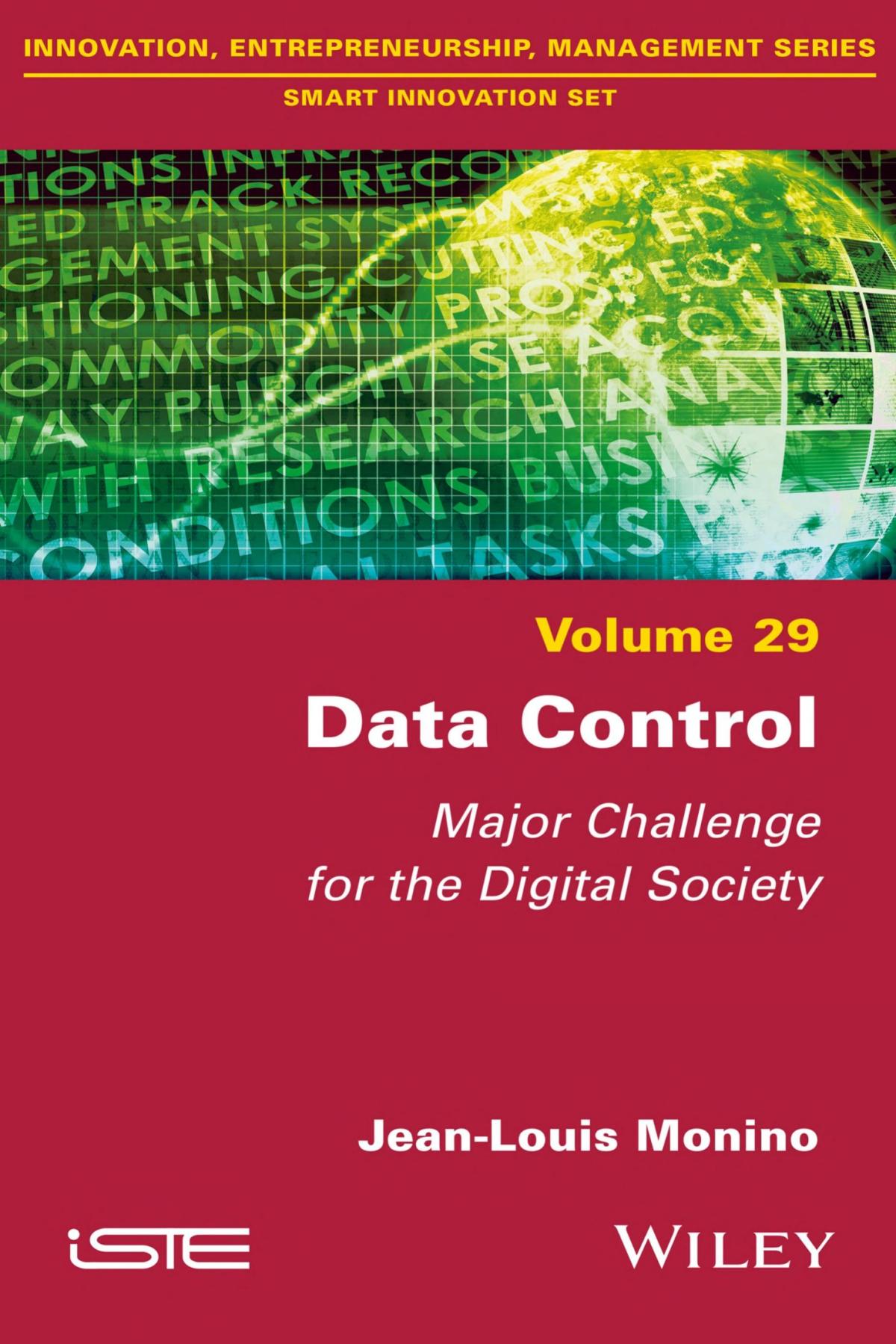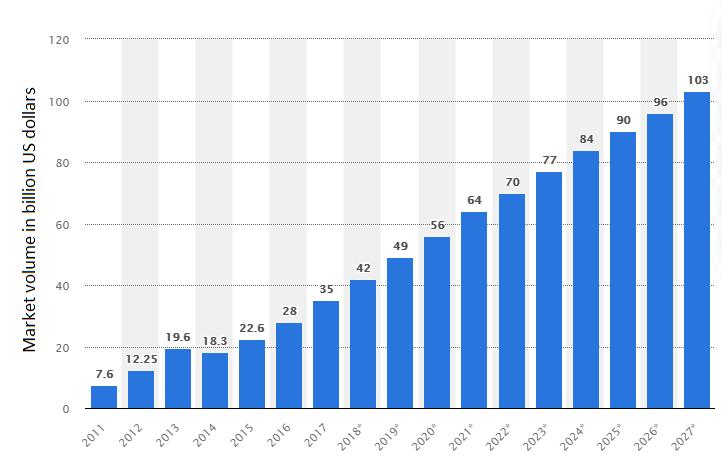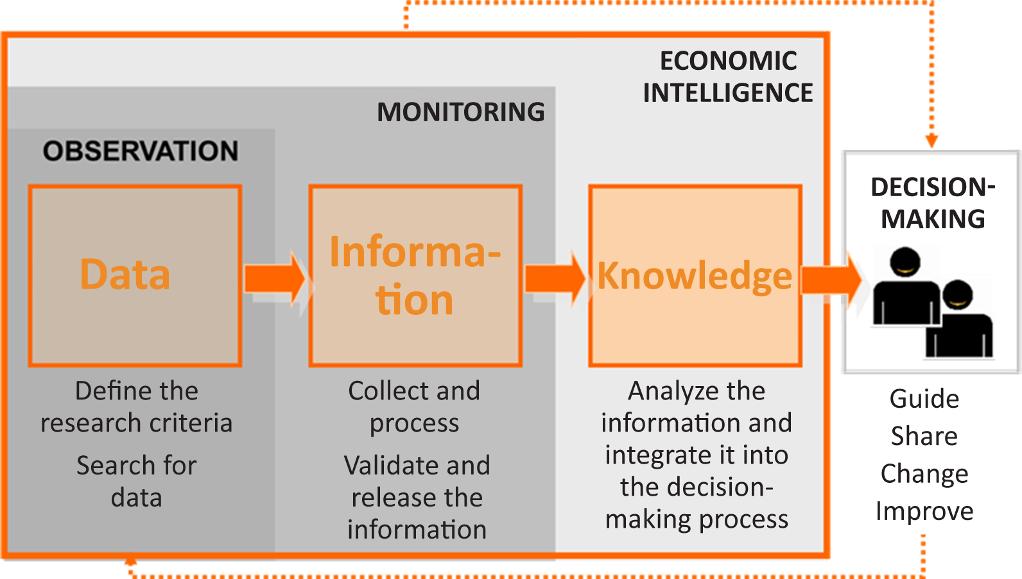Data Control Jean-Louis Monino
Visit to download the full and correct content document: https://ebookmass.com/product/data-control-jean-louis-monino/

More products digital (pdf, epub, mobi) instant download maybe you interests ...

Textbook of Critical Care 7th Edition Jean-Louis
Vincent https://ebookmass.com/product/textbook-of-critical-care-7thedition-jean-louis-vincent/

Textbook of Critical Care, 8e (Feb 27, 2023)_(0323759297)_(Elsevier) Jean-Louis Vincent
https://ebookmass.com/product/textbook-of-criticalcare-8e-feb-27-2023_0323759297_elsevier-jean-louis-vincent/


An Introduction to Data-Driven Control Systems Ali Khaki-Sedigh
https://ebookmass.com/product/an-introduction-to-data-drivencontrol-systems-ali-khaki-sedigh/ Tokyo Ever After Emiko Jean [Jean
https://ebookmass.com/product/tokyo-ever-after-emiko-jean-jean/

Starting Out with Java: From Control Structures through Data Structures 3rd Edition, (Ebook PDF)
https://ebookmass.com/product/starting-out-with-java-fromcontrol-structures-through-data-structures-3rd-edition-ebook-pdf/

Practical Graph Structures in SQL Server and Azure SQL: Enabling Deeper Insights Using Highly Connected Data 1st Edition Louis Davidson
https://ebookmass.com/product/practical-graph-structures-in-sqlserver-and-azure-sql-enabling-deeper-insights-using-highlyconnected-data-1st-edition-louis-davidson-2/

Practical Graph Structures in SQL Server and Azure SQL: Enabling Deeper Insights Using Highly Connected Data 1st Edition Louis Davidson
https://ebookmass.com/product/practical-graph-structures-in-sqlserver-and-azure-sql-enabling-deeper-insights-using-highlyconnected-data-1st-edition-louis-davidson/

Diabétologie 3e édition Edition Louis Monnier
https://ebookmass.com/product/diabetologie-3e-edition-editionlouis-monnier/

Fundamental Things 1st Edition Louis Derosset
https://ebookmass.com/product/fundamental-things-1st-editionlouis-derosset/
Data Control
Dimitri Uzunidis
Data Control
Major Challenge for the Digital Society
First published 2020 in Great Britain and the United States by ISTE Ltd and John Wiley & Sons, Inc.
Apart from any fair dealing for the purposes of research or private study, or criticism or review, as permitted under the Copyright, Designs and Patents Act 1988, this publication may only be reproduced, stored or transmitted, in any form or by any means, with the prior permission in writing of the publishers, or in the case of reprographic reproduction in accordance with the terms and licenses issued by the CLA. Enquiries concerning reproduction outside these terms should be sent to the publishers at the undermentioned address:
ISTE Ltd
John Wiley & Sons, Inc.
27-37 St George’s Road 111 River Street London SW19 4EU Hoboken, NJ 07030
UK USA
www.iste.co.uk
www.wiley.com
© ISTE Ltd 2020
The rights of Jean-Louis Monino to be identified as the author of this work have been asserted by him in accordance with the Copyright, Designs and Patents Act 1988.
Library of Congress Control Number: 2020938410
British Library Cataloguing-in-Publication Data
A CIP record for this book is available from the British Library
ISBN 978-1-78630-550-3
1.1.
1.2.
1.2.1.
1.2.2.
1.3.
2.1.
2.1.1.
2.1.2.
2.1.3.
2.2.
2.3.
2.3.1.
2.3.2.
2.4.
2.5.
2.6.
2.7.
Chapter 3. From Data to Information:
3.1. Value creation from data processing
3.2. Value creation and analysis of open databases
3.3. From data to information: the “DataViz” or data visualization .....
3.4. From data to information: statistical processing ..............
3.4.1. Phases of data processing
3.4.2. Processing the data .............................
3.5. Turning mass data into an opportunity for innovation ...........
3.6. Development of company assets in the web of data
3.7. Conclusion ....................................
Chapter 4. Information: Contextualized and Materialized Data
4.1. What is information? ..............................
4.1.1.
4.2.
4.2.1.
4.2.2.
4.3. Formal
4.3.1.
4.3.2.
4.4. Importance
4.4.1.
4.4.2.
4.4.3.
4.5. Décodex
4.6.
Chapter 5. From Information to Knowledge: Valuing and Innovating ........................................
5.1. Innovation as a driving force of growth ...................
5.1.1. Innovation and the intangible economy .................
5.2. Knowledge: the key to innovation ......................
5.3. Building knowledge: economic intelligence ................ 109
5.3.1. The EI process and the transition from information to knowledge . 110
5.3.2. Managing the data warehouse to extract knowledge and insight .. 111
5.4. Data mining, Statistica and Tibco ....................... 114
5.5. Information an economic good? ........................ 115
5.5.1. Innovation as a driving force of growth ................. 115
5.5.2. Strategic business intelligence ...................... 116
5.6. What is data science? .............................. 118
5.7. Conclusion .................................... 119
Chapter 6. From Knowledge to Strategic Business
6.1. Data valuation
6.2. How
6.3. Data governance: a key factor in
6.4. EI: protection and enhancement of
6.5. Data analysis techniques: data
6.6.
Foreword
In the fight against waste, one particular commodity, however eminently precious, is rarely mentioned: data.
While it is not a priority, it is first collected to serve as, or illustrate, a reasoning or an idea. The major challenge of the last two decades has refocused on another field: that of understanding and analysis. Offering a clear report facilitates the management and steering of an activity.
Data processing opens the door to strategic recommendation. Now that the value of data is known, its value can further improve, provided it is operational and ready to use.
The individual, the consumer and the voter are regularly solicited, sometimes against their will, often in ignorance of the risks involved. In the face of the abuses that have been noted, the law has had to be involved.
Before this stage of maturity, “just in case” storage is reassuring without really knowing why. This intuition leads companies to sometimes accumulate incomplete or unorganized data. Ignorance of its purpose has resulted in the accumulation of data in huge volumes, with the only limit being the technical constraints of the moment, the cost per byte.
So far, it has been impossible to use all this data due to lack of time and resources. Therefore, it is not possible to educate the overall population. Using a sample is imperative, with representativeness being a key concept.
x Data Control
Technological progress has made it possible to overcome this constraint of representativeness. The entire dataset is now vulnerable to attack even though the size is discouraging. These masses of data, veritable “assembled pieces”, have whetted the appetite of the greedy known as Big Data, machine learning, artificial intelligence and other “datavores”, reinventing a 2.0 statistic: data science.
At the same time, the proliferation of equipment (tools, applications) has democratized the use of data, making connection and leading to automatic and endemic branches. The variety of media (computers, tablets, smartphones), the explosion of networks and access providers facilitate the exchange, sharing and processing of information. Mobile consumption has become instantaneous.
This continuous feeding creates a new addiction, a demand of a different nature. In order to respond before it becomes obsolete, it is necessary to move quickly, even if it means returning the information to its original role as simple data. In this sense, pre-selections are made, and the data is delivered, sorted and “ready to read”, not necessarily ready to use. The preferences and tastes of the “target” are identified; its supposedly known expectations are identified in relation to its history. Trespassing?
However, the absence of filters or segmentation leads to fears of saturation. The data is ubiquitous despite its limited lifespan. It is refreshed and constantly updated. The required reactivity sometimes weighs on its quality. The corollary concession is the “average” information, which is difficult to exploit. It is against this risk of drowning or submersion that analysts, true lifeguards, fight. Their responsibilities are cleaning, reducing and synthesizing data; detailing or refocusing it if necessary; and using it in the delegated question. At the heart of the process, this human presence guarantees the surpassing of a simple mechanical treatment and therefore the creation of value. The mission of the latter consists, after all the stages of data processing, of restoring the true dimension of the data while making it profitable.
Here, Professor Monino’s book brings the main tools that are indispensable to his mission, which, in the course of time, will become more and more indispensable. Unfortunately, not all companies have the necessary resources (time, budget, analyst) to extract or exploit this wealth. However,
Foreword xi
the use of specialists such as E2S-Conseils allows us to make the most of this information to help companies develop and flourish.
I hope that you enjoy reading and learning from this book.
Philippe RIBIERE Chief Executive Officer E2S-Conseils
Acknowledgements
I wish to dedicate this book to my sister who unfortunately was unable to read my work on data.
Also, all the members of the “Réseau de Recherche sur l’Innovation”, RRI, and in particular, Dimitri Uzunidis, who encouraged me to publish this work and I thank him warmly for his encouragement.
This book is the culmination of many years of research dedicated to data processing, to statistics and to econometrics in the TRIS laboratory (Traitement et Recherche de l’Information et de la Statistique). It is the fruit of various work carried out within the framework of R&D (Research & Development) for several start-ups in the Languedoc-Roussillon of France and large private and public groups.
Thank you to all those who have supported me during difficult times and have helped transform an individual intellectual adventure into a collective one. In particular I offer my thanks to Philippe RIBIERE, President of E2S-Conseils with whom I have written several R&D books over the years.
Thank you also to the team of researchers at the “Montpellier Recherche en Economie” laboratory who demonstrated their trust in my research and granted me my emeritus status.
I would also like to thank my children: Christine, Laurent, Caroline and Daniel, as well as their partners: Laurent, Alexandra, Guillaume and Louise
xiv Data Control
who have all supported and surrounded me during the difficult times I had to face.
To my grandchildren: Lily-Rose, Jean-Baptiste, Alice and Gabriel.
To Anne-Marie, my wife.
MONINO
Introduction
The world has become digital, and technological advances have increased the number of different ways for accessing, processing, and distributing data. New technologies are now reaching a certain maturity.
Today, data comes from all sides: geolocation sensors, smartphones, social networks where we share files, videos, photos, etc., Internet shopping transactions by customers, banking transactions through credit cards and so on. In France, out of 65 million people, 83% are Internet users; 42% are registered on Facebook, or 28 million members. More than 72 million phones are activated, and the French spend on average more than 4 hours a day surfing the Internet. French mobile users spend 58 minutes or more there; 68% of the population is registered on social networks. French people spend more than 1 hour and 30 minutes a day on social networks. The development of these masses of data and their access represents what is called “Big Data”. These immaterial data arrive continuously; their processing poses problems, particularly in knowledge extraction. Thus, new methods of automatic information extraction are implemented: for example, “data mining” or “text mining”. They underlie profound changes that affect the economy, marketing, research and even politics. The amount of data will increase sharply with the arrival on the market of connected objects that will gradually come into use. Elements of our daily life are already connected: the car, the television and some household appliances. They are or will be equipped with a chip to collect and transmit data to their users via a computer, tablet or smartphone. The most important thing is that these items will also be able to trade with each other! This will allow us to remotely manipulate the equipment in our home, in our vehicles by connecting to
Data Control
them from our home and outside our home, using smartphones or any other equipment. This is called “the Internet of Things”.
This phenomenon is now of interest to operational decision-makers (marketing managers, financial managers, etc.) when it comes to analyzing the immense potential of data held by companies in real-time. In order to meet the challenge of “Big Data”, measures should be taken that include all the tools that allow data to be processed in a more restrictive way, as well as all the actors who analyze these data. This will only be possible through an awareness of the gains offered by “data enhancement”. The data in the organized, reorganized bases, processed by statistical methods or econometric modeling, become knowledge.
For a company it is essential to have more and more data about the environment in which it operates or will operate. We will no longer work on classes of behaviors but on individual analysis. It is easy to understand that this revolution is leading to the creation of so-called “start-up” companies whose aim is the automatic processing of data that make up what is known as “Big Data”. This is certainly one of the components of what some call the “new industrial revolution”. The Internet, digital and connected objects have opened up new horizons in a multitude of fields.
As an example, access to data allows quantitative and qualitative analyses to be enriched. Customer contacts can be analyzed with data collected by a call center1; this kind of product can also be offered in limited numbers, as E2S-Conseils does. This needs to be developed by exploring the content of emails, voice calls, and mixing this information with website navigation. Or, study the messages exchanged on social networks (Facebook, Twitter, Linkedin, etc.) to identify interesting new products or to know which products are most talked about.
For data to reach its full value potential, it must be easily accessible to all interested parties without additional barriers and at economically bearable costs. If the data are open to users (Matouk – MTRL review), other specific data processing companies may be created. This activity will meet the needs of users without the need for them to build models and equations themselves.
1 A call center is a center for processing incoming and/or outgoing calls.
In addition to its potential in economic terms and for the creation of new activities, the opening up of data is also a matter of philosophical or ethical choice. It quantifies collective human behavior and, therefore, belongs, in fact, to those whose behavior has been measured. The culture of this phenomenon is based on the availability of data towards a communication orientation.
To limit itself to the economic benefits of open data, a study carried out for the European Commission estimated the total public sector information market in 2008 in the EU at 28 billion euros. According to this study, the overall economic benefits of more open public sector data would amount to about 40 billion euros per year for the EU. For the EU economy as a whole, the total direct and indirect economic gains from the use of ISPs (Internet Service Providers) and applications based on these data would be in the order of 140 billion euros per year.
The Internet age has massively increased the search for information. Companies are overwhelmed by the flood of data that results from simply surfing the Internet. In other words, they are forced to acquire the relevant information to develop their high value-added strategies in order to master the ever-changing environment. Now, the management of industrial strategies is largely based on the ability of companies to access strategic information to better develop their environment. This information can therefore be the source of new knowledge (knowledge pyramid).
The process of collecting, processing and interpreting information is a practice that goes beyond the definition of ideas to the realization of those ideas to ensure a better production of knowledge that generates innovations. It is economic intelligence that enables each company to optimize its offer quantitatively and qualitatively and also to optimize its production technologies.
In addition to the advent of ICT, the speed of production, dissemination and data processing capacity, another element has become important in recent years: time. This temporal element implies a notion of speed of information flow. This calls for a rethinking of corporate strategy, beyond the difficulties posed by the processing of large volumes of data. The value of a data item increases over time and depends on the multiple uses that are made of it.
xviii Data Control
Remuneration in the digital professions rose sharply in 2018, according to Robert Half’s remuneration study2. However, HR directors admit that it is often difficult to find the rare pearl: the average recruitment time for an executive manager is four months.

Figure I.1. Digital golden jobs in 2018. For a color version of this figure, see www.iste.co.uk/monino/control.zip
For some professions, the jump will be very high. According to Robert Half, the “golden job” in the digital world will be that of SEO Manager with 5–10 years of experience: the remuneration linked to this job should increase by 27% compared to 2017 and reach between 65,000 and 90,000 euros per year. Data scientists, even with little experience, will also see their salaries increase by 22%.
2 Robert Half’s study: “Les emplois en or du numérique en 2018” by Claire Jenik, Statistica, 11 Oct. 2017.
Introduction xix


Figure I.2. TIBCO’s data mining and Statistica software. The research and development project of E2S-Conseils in collaboration with the TRIS laboratory has been developed using Tibco’s Statistica Data Mining for health research (MONINO L., TIBCO’s data mining and Statistica software. The research and development project of E2S-Conseils in collaboration with the TRIS laboratory has been developed using Tibco’s Statistica Data Mining for health research, Thesis, 2019). For a color version of this figure, see www.iste.co.uk/monino/control.zip
Big Data includes the processing of these large masses of data, from their collection and storage to their visualization and analysis. This data thus becomes the fuel of the digital economy. They constitute the raw material indispensable to the queen activity of the new century: “data intelligence”. This book shows that the stakes of data are focused on the integration and development in the company. It deals with the issue of data control and valuation in a competitive context.
Faced with this multiplication of data, companies have to mobilize sophisticated processing techniques. In fact, the mastery of processing techniques is now becoming a real strategic and useful question for the competitive differentiation of companies (Bughin and Chui 2010). The processing of these masses of data plays a key role in tomorrow’s society, with applications in fields as diverse as science, marketing, customer services, sustainable development, transportation, health and even education.
Data Control


Figure I.3. Forecasting Big Data market size, based on revenues, 2011–2027 (source: Statista). For a color version of this figure, see www.iste.co.uk/monino/control.zip
In this context, companies must have the capacity to absorb all available data, enabling them to assimilate and reproduce knowledge. This capacity presupposes the existence of specific skills that enable the use of this knowledge. The training of “data scientists” is therefore essential in order to be able to identify useful approaches to opening up or internal exploitation of data and to quantify the benefits in terms of innovation and competitiveness, since Big Data is only one element of a new set of tools and techniques called “data science”.
The Data Scientist’s mission is to extract knowledge from company data. They will be called upon to perform strategic functions within the Commission. To do so, they must master the necessary tools. They must also be more pedagogical and increase their command of data mining, because the volume of data requires an increase in the range of techniques to be mastered.
Big Data includes the processing of these large masses of data, their collection, storage, visualization and analysis. This data thus becomes the driving force of the digital economy. They constitute the raw material indispensable to the queen activity of the new century: “data intelligence”. This book shows that the stakes of Big Data are focused on the integration and the development of data in the company. It deals with the issue of data valuation in a context of strong competition.
More precisely, it represents a research subject that involves several fields (Big Data, open data, data processing, innovation, economic intelligence, etc.). This multidisciplinarity allows us to bring a considerable enrichment to studies and research on the development of data warehouses in its entirety.
Information on the French population was published by various news media in 2019, for example, that published by Paul Manuel Godoy Hilario on 16 May 2019. This statistic displays an interest in the French population in the new data through the different information media in 2019. Approximately half of the respondents said they were quite interested in this news. In 2018, nearly 35% of French people turned first to generalist television channels to further develop information they had received.
Data Control


Figure I.4. The Big Data turnover and market size (source: Statista). For a color version of this figure, see www.iste.co.uk/monino/control.zip
Introduction xxiii

Figure I.5. With what interest do you follow the news through the information media (press, radio, television)? (source: Statista). For a color version of this figure, see www.iste.co.uk/monino/control.zip
This book is part of the continuation of the book Big Data, Open Data and Data Development published by ISTE and Wiley in their Smart Innovation set of books – coordinated by Dimitri Uzunidis –Innovation Research Network (Monino and Sedkaoui 2016). This book brings together all of my research work on economic intelligence over the last 20 years. Its objective is to show that the stakes of the “data revolution” era are focused on the integration and enhancement of data in the enterprise. It is part of a theme related to the rise of the intangible economy mobilizing knowledge and know-how, and highlights the importance of data. The contribution of information allows the generation of knowledge useful for decision-making, within the framework of the various activities specific to the development of the company. To do this, we must clarify what is more precisely a “Data” to be able to understand and formulate the expression “Big Data” issues.
We are going to follow this conception of EI (economic intelligence) (Monino and Boussetta 2013) step by step, based on the basic model proposed in 2005 by Monino and Lucato during the “mornings of the city” meetings at the Montpellier Chamber of Commerce and Industry. Data, information, knowledge and wisdom (decision) are all essential elements in preparing for a good decision and we will follow this in the following chapters of this book.



